This post may contain affiliate links. Please read our disclosure policy.
Clarified butter is simply butter with the solids removed. Learn how to clarify butter with ease, an ingredient used in many pastry and baking recipes.
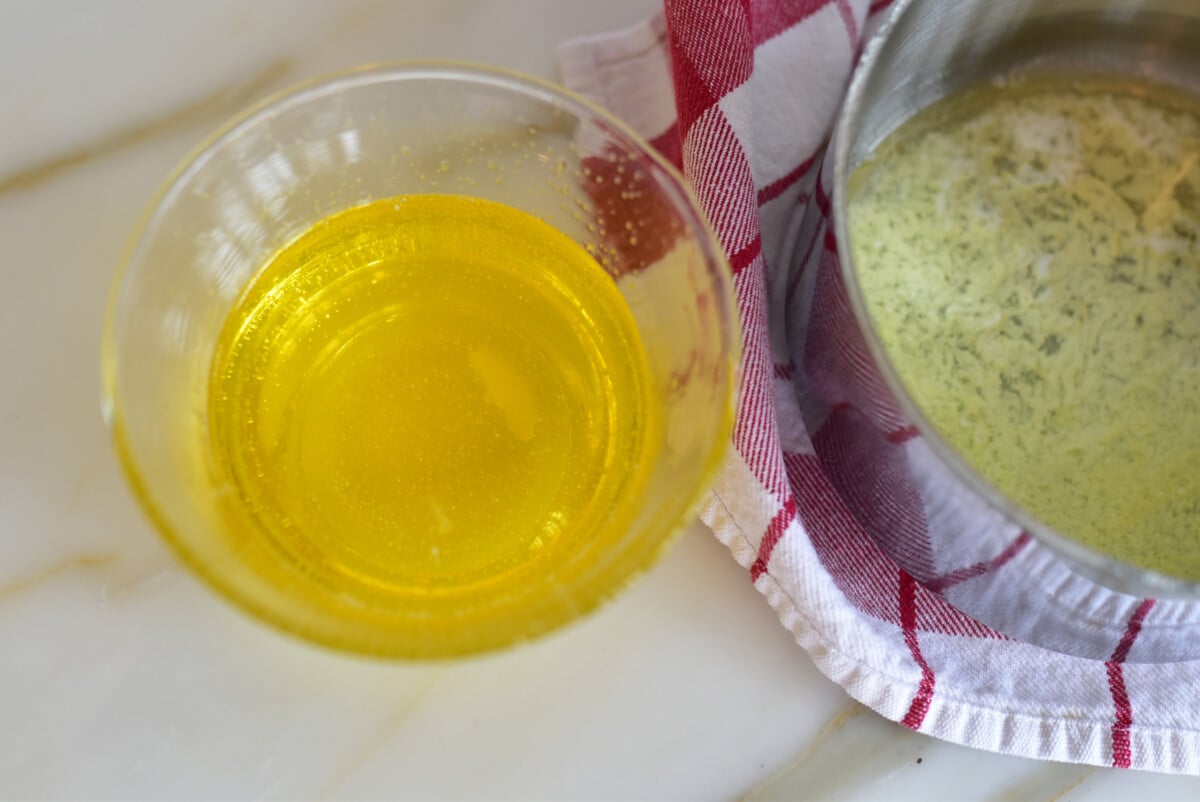
I have become such close friends with butter over the last years that this post makes me feel right at home in butter’s lovin’ arms. I didn’t used to be so free and easy about butter. In fact, I shunned it for a good couple of years, replacing it wherever possible with a healthier fat (hello EVOO), or no fat at all. Then I went to culinary school, and all bets were off! It didn’t take but one lesson in buttercream, or another in finishing sauces to their silkiest, to get me to embrace butter perhaps more than one should. It has been said that an embrace lasting 30 seconds or longer makes a difference in our well-being, so I’ll go ahead and count my butter-embrace among those….
What is clarified butter?
Clarified butter is simply butterfat with the milk solids and water removed. The remaining pure butterfat is translucent gold in color.
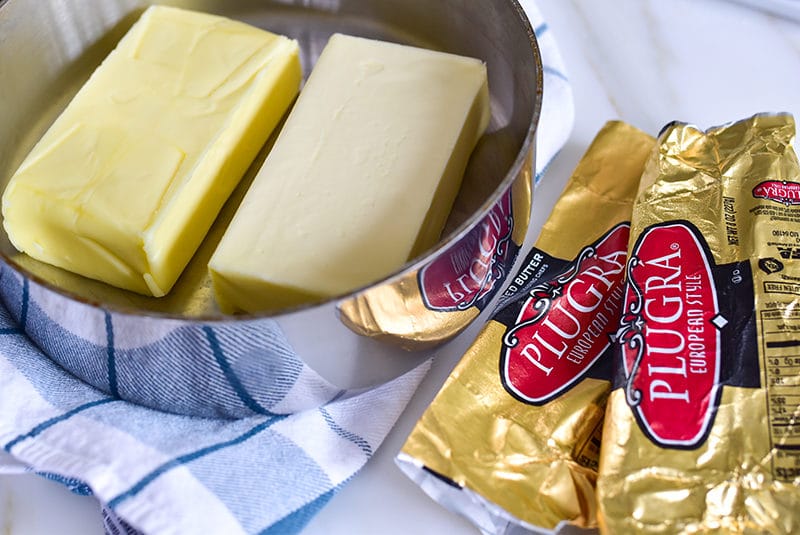
What butter is best to clarify?
After clarifying countless pounds of butter over my career, I always opt for European-style butter, or cultured butter, to clarify. The flavor and aroma of European butters are superior to other standard butter, and it clarifies incredibly easily because its milk solids settle easily and naturally, when heated properly, at the bottom of the pan. Standard butters create foamy solids that rise to the surface during the clarifying process, and these are difficult to skim away entirely.
Is clarified butter the same thing as ghee?
They are very similar, but clarified butter is always made with pure butter, and ghee may be butter ghee (clarified, with milk proteins removed), or vegetable oil ghee.
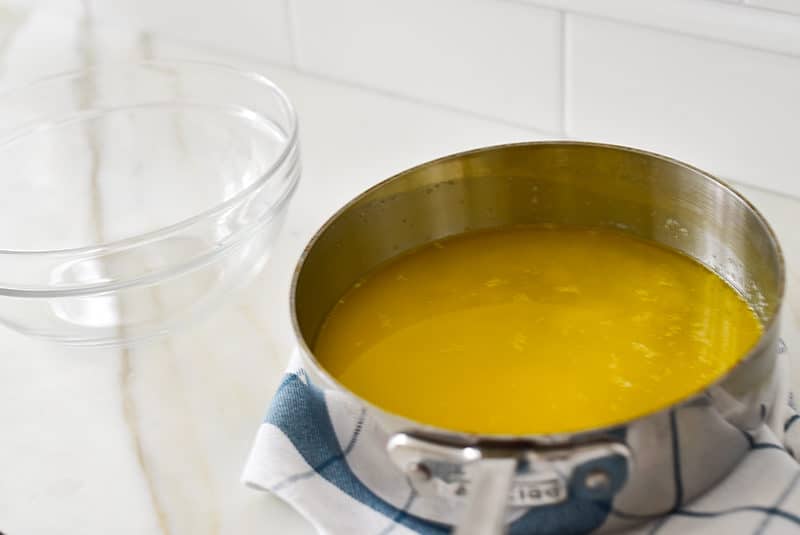
Can You Use Salted Butter?
Butter of any kind, salted or unsalted butter, may be clarified using the same method. The flavor will be slightly different, with salted butter retaining its light salty flavor.
How to make Clarified Butter
Scroll down to the recipe card to see my video tutorial showing how easy it is to make this helpful ingredient. The essence of the process is simply melting butter, low and slow, allowing the solids to separate from the butterfat. Some butter will separate very cleanly when melted, leaving the solids at the bottom of the saucepan where they rest as you pour off the golden butterfat. Other butters will separate as they melt, but the solids get foamy and float as well as some resting on the bottom of the pan. When this happens, remove the foamy solids with a slotted spoon before pouring off the melted butterfat.
My recipe below notes three different methods for clarifying butter cleanly every time.
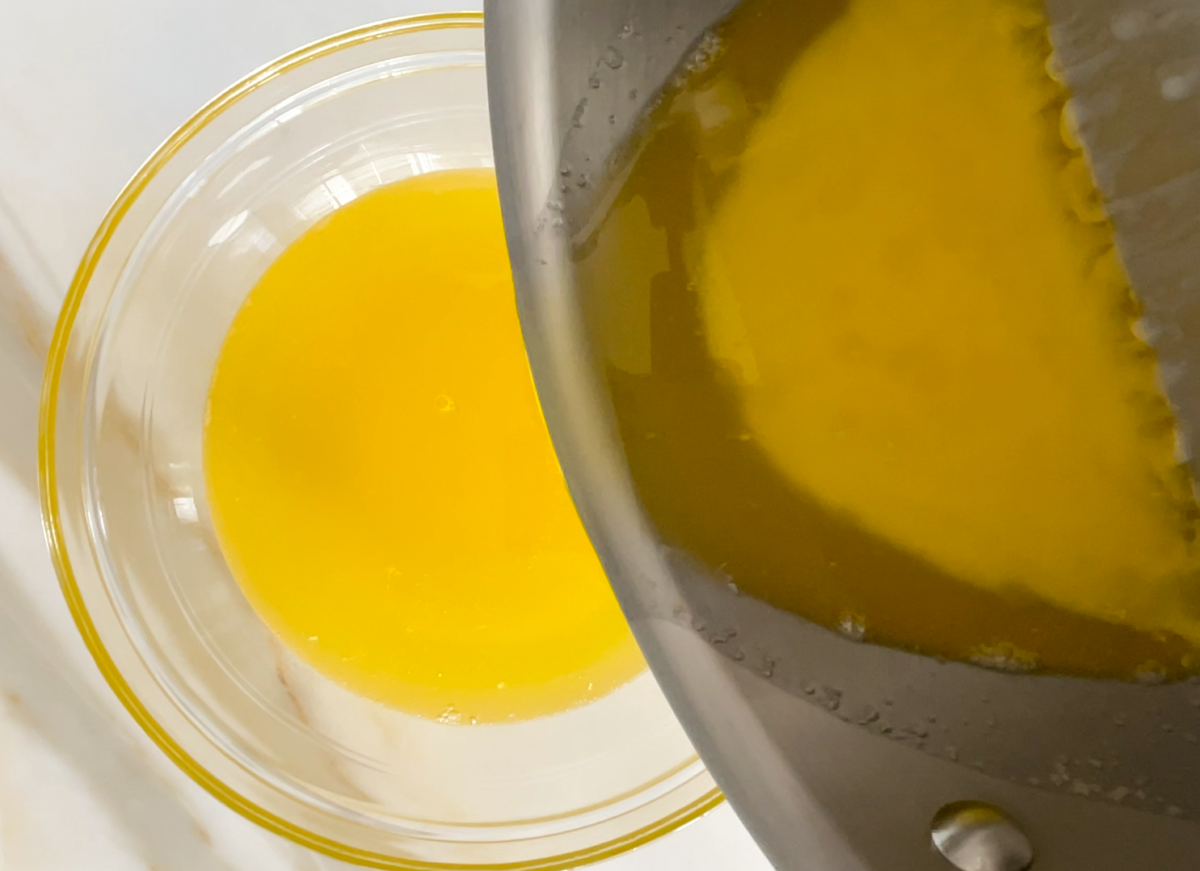
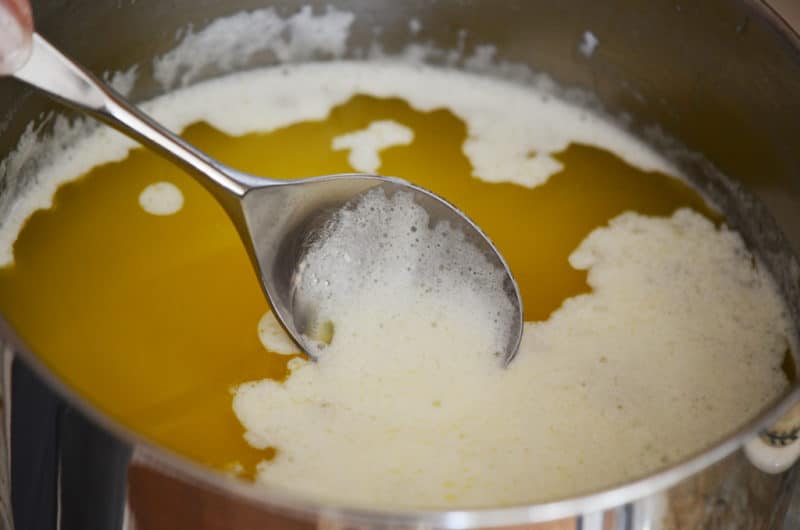
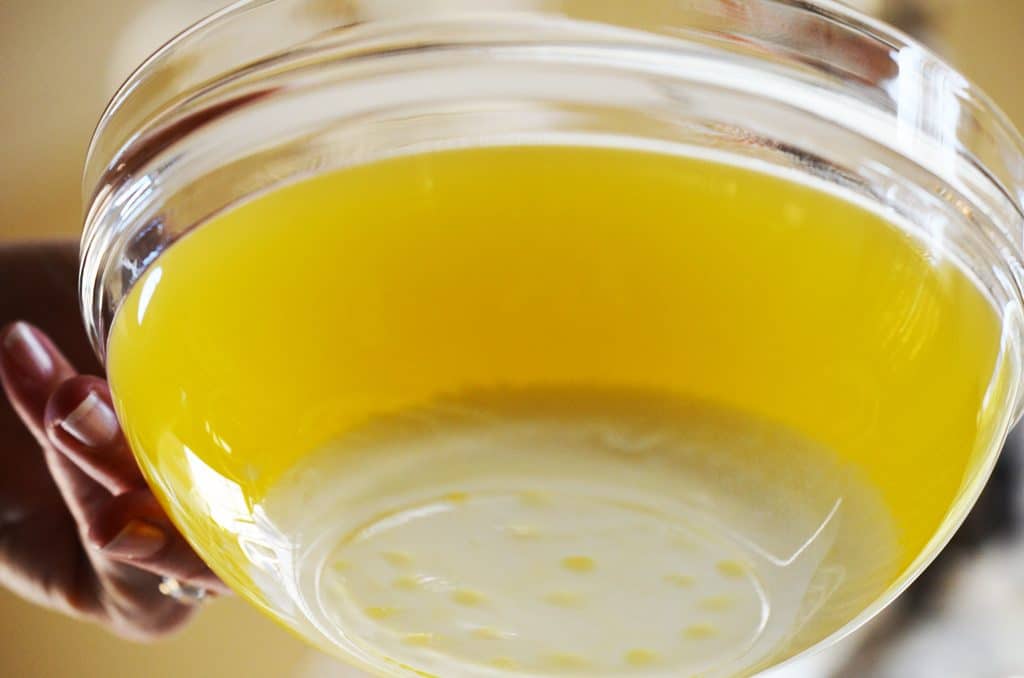

Is clarified butter healthy to eat?
Clarified butter has the same nutrition, calories and fat as butter that is not clarified. It is, however, lactose free.
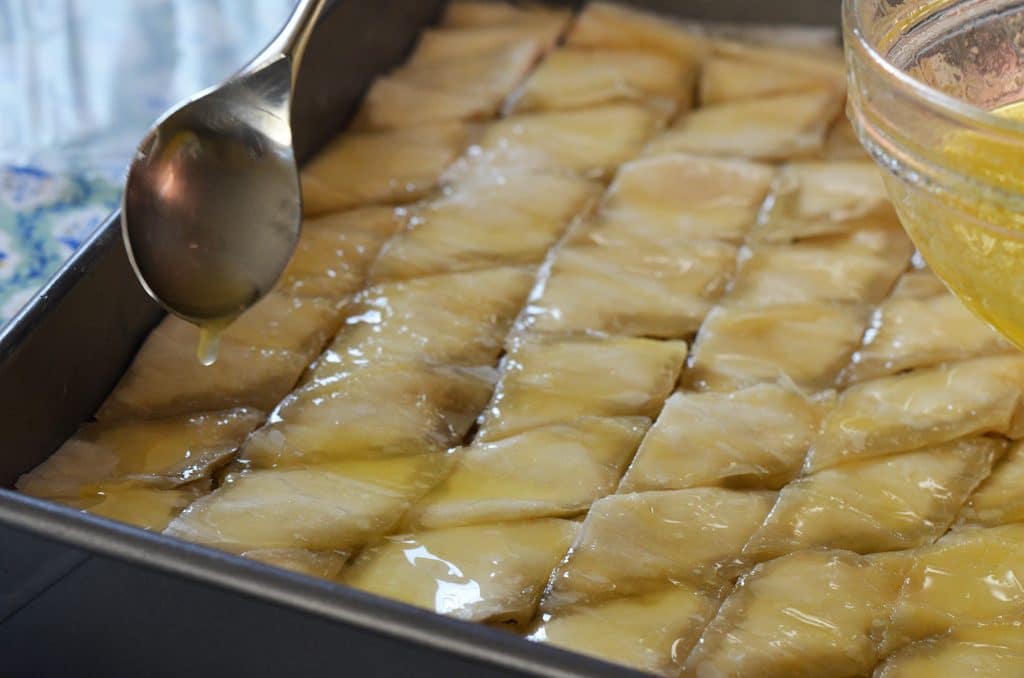
Cooking and baking with it
Clarified butter, or “liquid gold,” is an essential ingredient in all kinds of recipes, including those that call for high-heat cooking–and particularly important in Lebanese baking. Professional chefs use clarified butter for all kinds of cooking, but home cooks find this form of butter especially useful for cooking and baking too. Any butter can be clarified, but some butter clarifies far easier than others.
The clear butter has a higher smoke point, which means it will not burn at high temperatures. It is preferred for cooking over high heat, such as pan frying and pan searing.
This is an essential ingredient in pastries like baklava (Lebanese Baklawa). The reason it’s so important is that the baked pastry is spotless golden brown. If the butter is not clarified, or not clarified well, milk solid specks turn dark and mar the look of the pastry.
Use it in sauces like hollandaise sauce for eggs benedict.
If time is tight, there are many commercial brands available, such as 4th & Heart and Organic Valley.
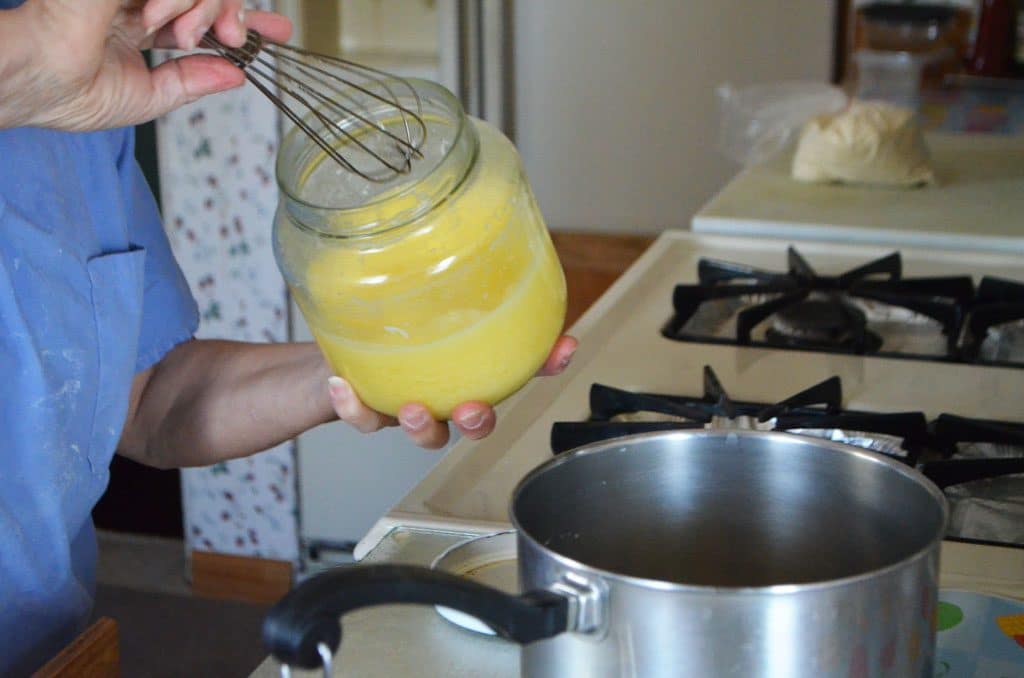
Storage
It enjoys such a long shelf life. Store at room temperature in a cool, dark place in an airtight container such as a jar, for several months. Or store in the refrigerator for a year or beyond. Freeze in a similar way, in an airtight container for a good year.
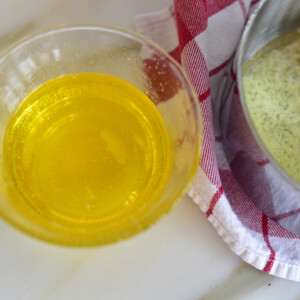
How to Clarify Butter
Ingredients
- 1 pound butter, preferably European-style such as Plugra or Kerrygold
Instructions
- Place the butter in a saucepan over the very lowest heat.
- Melt the butter, completely undisturbed, untill fully melted, about 30 minutes at this low temperature. It is essential not to stir or move the saucepan while the butter melts. The goal is to allow the solids to remain at the bottom of the pan.
- If using European butter, carefully and very slowly pour the melted butter from the saucepan into a heat-resistant container or jar. As you get to the bottom of the pan where the solids reside, be extra careful not to allow any of the solids to pour off into the clarified butter container. Set aside the remaining solids for another use, such as dressing steamed or roasted vegetables.
- If using standard butter, use one of these three methods: skim and pour off, chill and rinse, or strain (see notes).
- Store, airtight, in the pantry for at least 3 months, in the refrigerator or freezer for up to a year.
Video
Notes
Nutrition
Nutrition information is automatically calculated, so should only be used as an approximation.
Recipes using Clarified Butter
Pastry! We wouldn’t bake Lebanese Baklava Recipes with out it.
Cookies! Get the ultimate meltaway texture and pure flavor in Lebanese Ghraybeh.
Rich Bread! Bake enriched Kaak, a favorite with many spice flavors.
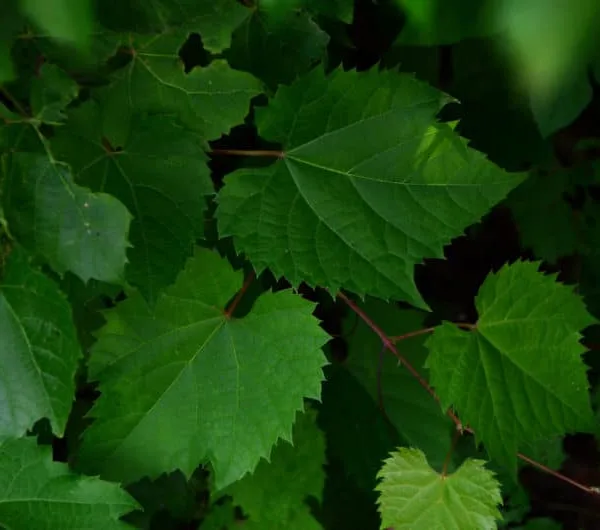
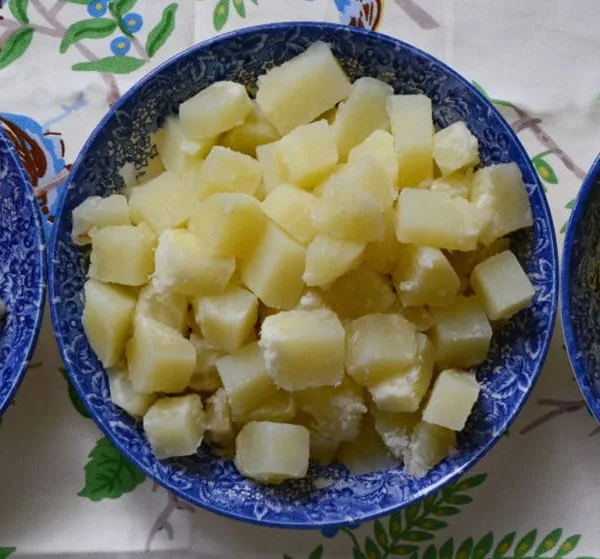
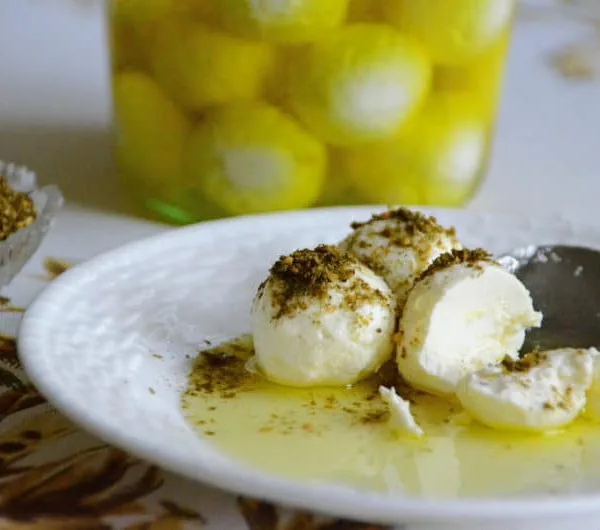
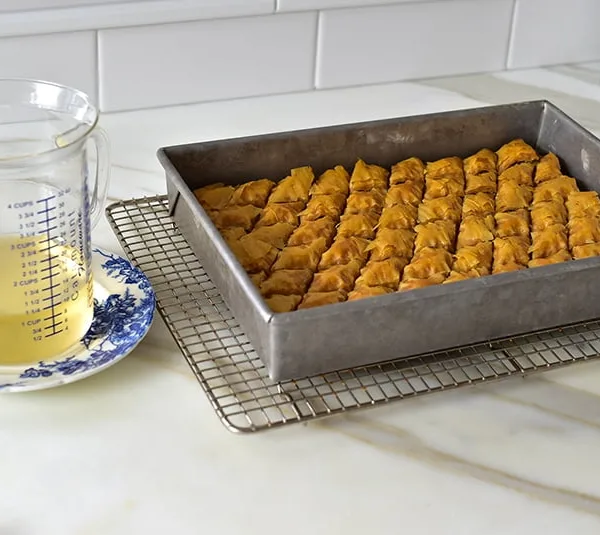





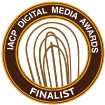

I clarify our butter, as my wife is allergic to both lactose and casein (she can’t drink lactose-free milk, by example). We think both are removed in the clarifying process. I use Kerry Gold generally, but have noted a difference when I use US-based butter. So my question: Why is European butter different, in the way it clarifies, from US butter?
Thanks Roger–European butter has a higher butterfat content and less water, so it’s often much easier to clarify than other butters!
Can you use clarified butter when making stove top popcorn?
Can you also put it on the popped corn?
GREAT thought Linda–absolutely, clarified butter will do all of that without burning at the high heat needed for stovetop popping–I will add this option to my stovetop popcorn recipe!
Thank you for this information!
Thanks Di!
My husband bought a jar of ghee. However it is not clear and seems to be mostly solid with a clear layer on top . Did it go bad?
Christine hello! If the butter has a fresh scent and is within the expiration date, it should be just fine. But if you aren’t sure, I would get a fresh jar or make your own!
I adore all things that you do! Thank you. Your recipes have fed several branches of my family tree because you cookbooks are my go to gift.
Toum. Need I say more! Grazie!
Well you are the kindest! Thank you so very much, I am honored. TOUM!!!! XOXO
So easy to follow. Patience is the key. Worked wonders.
Patience! The most important ingredient! Thank you Kathy!
Simplicity itself; you have to work at messing this up!
Truth Sarah, thank you!
Hi Maureen,
I made the butter ghee as you described.
However, when I used it in my Baklawa, it had black spots on the top of the baklawa. (It still taste good)
Did I do anything wrong?
Thanks for this great article. It helped me to make the best baklawa ever! Yummy!
Hi Regas–the black specks happen when all of the butter solids aren’t fully removed from the clarified butter. The clarified butter must be completely free of any solids; this can take some extra attention to rinsing if you use the solidify-then-rinse solids off method, or pouring off of solids from very slowly melted butter if you use that method.
Would it not be easier to just use ghee instead of clarifying butter at home? Was that what you ended up buying, or was it something else?
Hello there–thank you for commenting! One could certainly use purchased ghee, but making sure that it is butter ghee and not vegetable ghee (which contains trans fats and doesn’t have the right flavor for baklawa). The clarified butter I purchased was not labeled as ghee; it was labeled as clarified butter and sold in the refrigerated cheese section of the grocery store.
Thanks, Maureen. I hadn’t even thought of vegetable ghee as a possibility. Butter ghee or clarified butter it is, then. Happy Holidays to you & yours!
Maureen, I am enjoying your blog. Thanks for sharing your (and your mom’s) technique for clarifying butter. I’ve always been a little on the lazy side when it comes to that step, just melting the butter instead. But it does make a difference. I had not heard about rinsing the disk of chilled butter under warm water. That’s an excellent tip. I’ve made baklava once or twice, with some success. But I don’t do it often. And I once had a spectacular failure. I made a batch of baklava that seemed on the soggy side to me. They never crisped nicely. So, rather stupidly, I put them back in the oven to brown more (this is after they had cooled). Needless to say, I made a huge mess as all the butter re-melted. I had to toss the whole batch! So…I’m looking forward to tomorrow’s post. Cheers and have a wonderful holiday.
Domenica, you are not alone in the baklawa sog. I have had that happen too, and so has Aunt Rita who is the ultimate baklawa pro. Great to hear from you and sending a big hug from Michigan!
Hi, enjoy d reading your blog, i have been making baklava for 30 years or more and have to tell you I just microwave the butter. t works and doesn’t affect flavor or consistency. I use to clarify the butter but when you make 6 trays at a time this is a huge time saver. I also use rose water.
Hi Gail, thanks so much. Do you leave the solids behind or do you pour everything over pastry, solids and liquid butter both?
I’m so excited about what’s coming tomorrow that I just can’t wait to chime in with my “shout out” for Lebanese baklawa. For those who’ve never made this pastry before, the work is all worth it for a piece or two (or three) fresh from the oven. Call me crazy, but I can now walk away from a tray of cold baklawa….however, I will invest the time and energy to prepare a pan to give away, just for to enjoy a sample of fresh, warm baklawa while standing at the kitchen counter and giving thanks for of my Lebanese heritage.
Don’t we just love it, cousin?!
I am so in love with your website – especially the stories of your family and food! I, too, was fortunate enough to be born into a Lebanese family of 8 children – 5 boys and 3 girls. Both my parents (deceased) were Lebanese. I can relate to everything you write about – especially you father. I look forward to every post! Thank you for keeping our heritage alive! Mimi
Beautiful. Thank you so very much! I’m honored!